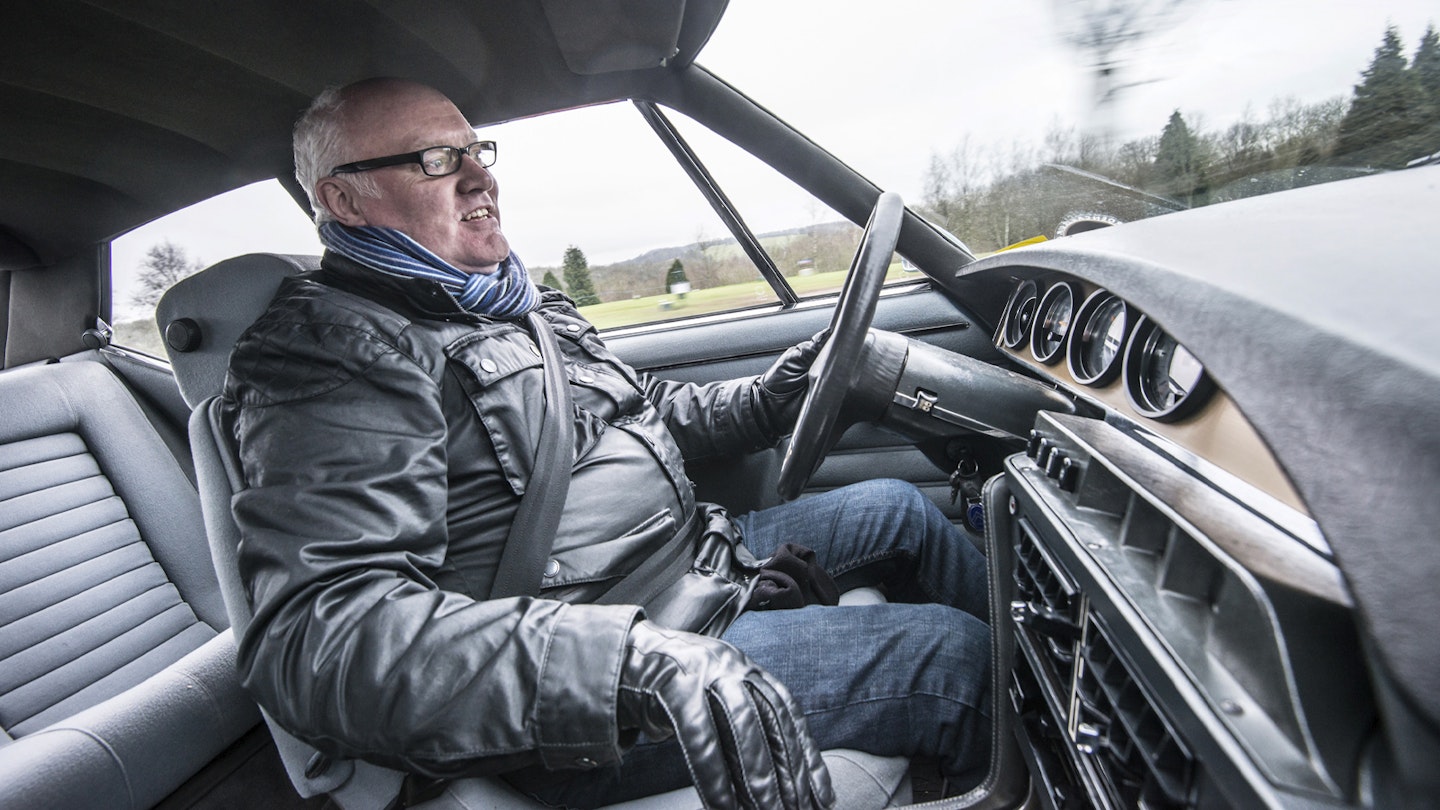‘It looks just like a spaceship arriving – otherworldly’
Martin Houston’s history of hardcore German cars made the Citroën SM seem an odd choice for his wishlist. Let’s see if it lives up to the dream
This morning’s reader doesn’t turn up to drive his dream car in what you’d call a normal transport; it’s
a BMW M3 E36, fully caged, with non-adjustable bucket seats, harnesses, upgraded brakes and coil-over dampers. The exterior is covered in stickers and a profusion of track day passes are adhesive-bound to the inside of the windscreen. Parked up in this Surrey lane it looks just a little bit conspicuous, and even a touch feral. As locals pass, in a mixture of modern executive barges and Chelsea tractors, there’s more than one glance down an upraised nose.
Owner and fellow Scotsman Martin Houston answers my own questioning stare. ‘Oh, it’s perfectly drivable on the road, if a wee bit hectic, but on the track it’s very controllable at speed.’ Ah yes, the title of his online blog doesn’t lie, for he’s completed upwards of 1200 laps, and counting, of his beloved Nürburgring. ‘It’s a bit of an addiction,’ he admits, with understatement. ‘About 800 of those were in my modified 231bhp BMW E30 M3, 80 in my similarly upgraded Lotus Elan SE Turbo and most of the rest in this.’
So, given his penchant for track-hardened BMWs, why did he put a standard Citroën SM on his wishlist? ‘Back in the early Seventies I lived with five girls in Edinburgh,’ he recollects. ‘And the uncle of one owned a black SM. I can still remember the first time I saw it, it was like a spaceship arriving, otherworldly.
A Seventies Spaceship
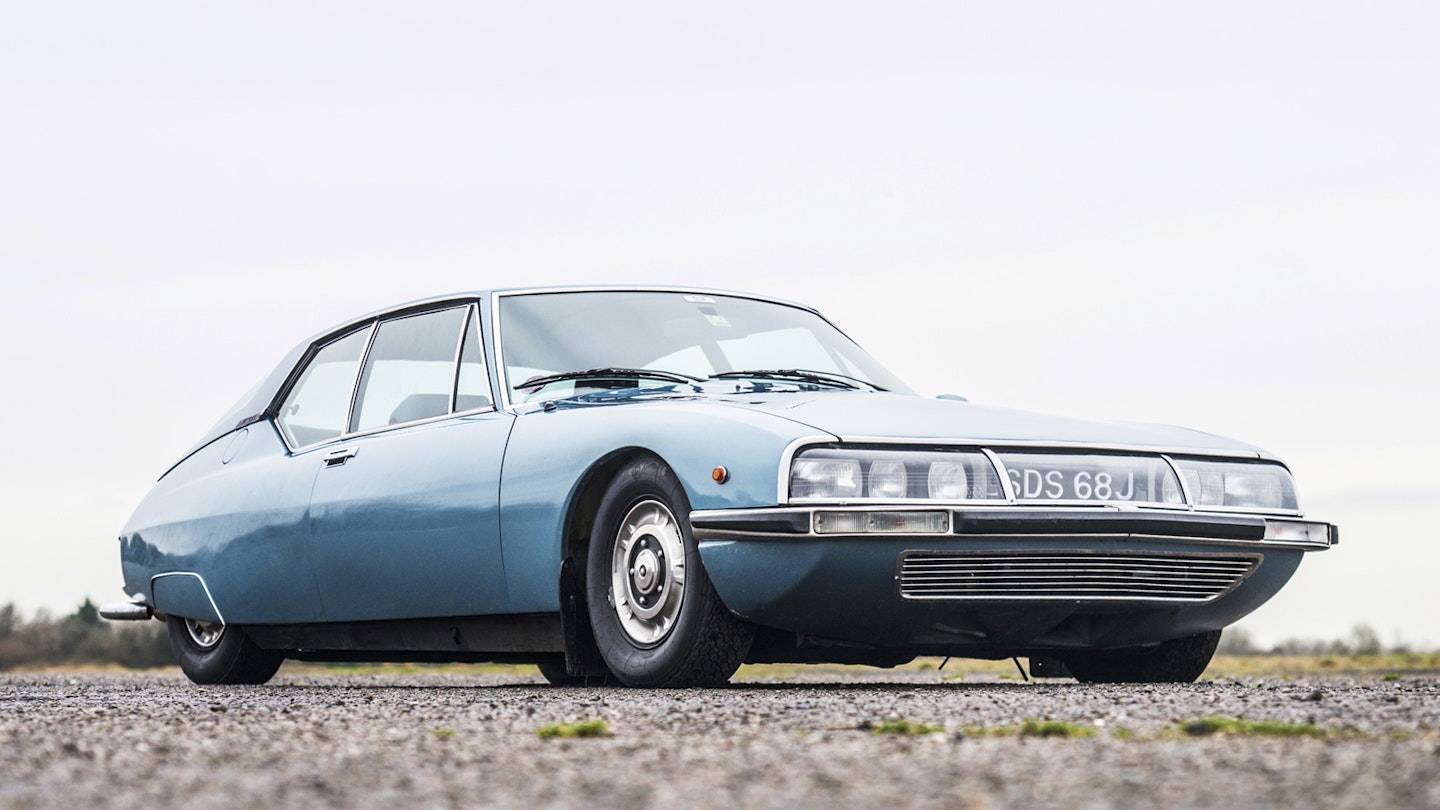
‘You’ve got to remember most people were pootling around in Austin Allegros, Ford Cortinas and the like. I had a Hillman Hunter GT with a Holbay-tuned engine, which was a special car, but this thing rendered it mundane in an instant.’
Our host Ian Dixon-Potter starts raising the electric door to his double garage and I can sense my reader’s anticipation rising. ‘There she is,’ he says, as its streamlined platypus snout appears. ‘Every bit as beautiful as I remember – just look at it.’ I just make out the word ‘spaceship’, as he whispers under his breath. It’s truly striking; perhaps even more so in this car’s rare Bleu Platine paint – identical to the SM that starred in the ITC television series The Protectors.
There are so many delightful stylistic touches to take in, starting with the six Cibié headlamps – the central two of which follow the wheels, DS-style, so the beam projects round corners – mounted under the Plexiglass nose with the numberplate. Your eye is drawn over the beguiling teardrop profile, taking in the double chevron bonnet vent and rear wheel spats. Only the rear end draws what amounts to a minor quibble. ‘Some of the chrome on the back is a heavy touch,’ says Martin, repeating criticisms made in period.
Primary controls

A bass-filled fanfare from the twin exhaust pipes announces the awakening of the SM’s exotic powerplant – French but with a Latin twist – before the hydropneumatic suspension kicks in and the rear rises majestically, showing its contempt at our critique. ‘The memory is still there and it’s these seats that I remember,’ says Martin, slipping behind the wheel. ‘They were so unusual for the time. I believe because of their extreme contour, if you slam on the brakes with leather examples you then submarine down them.’
Thanks to Citroën’s sensitive push-button brakes, avoiding that is easier said than done but Martin has owned a CX and driven a DS previously so he’s familiar with the marque’s peculiarities. As we head out into the school-drop-off crawl, nudging along at 15-20mph, he familiarises himself with the controls. ‘That gearbox is beautiful. The action’s like a rifle bolt – but you have to be careful because it’s sprung to the centre and you need to maintain some force to keep it in line for the next gear.’
His foot is easy on the high-pressure braking system’s push button; that said, we still jerk forward heavily on occasions. ‘Phenomenal stopping power,’ he says. I’m glad he’s no novice otherwise, even with a seatbelt, it’s likely I’d be licking the windscreen by now. ‘The steering is very, very direct – pin sharp. You’ve got to be aware of it,’ he offers, as he counters a small over-correction. We cross the town bypass and head uphill in search of B-roads for a play. The traffic’s lighter here and Martin’s able to open it up. ‘That engine is a lovely, sonorous V6. I’ve always loved the combination of quirky French engineering and exotic Italian engine, and the reality is exactly what I thought it’d be.’
Low-set Maserati engine
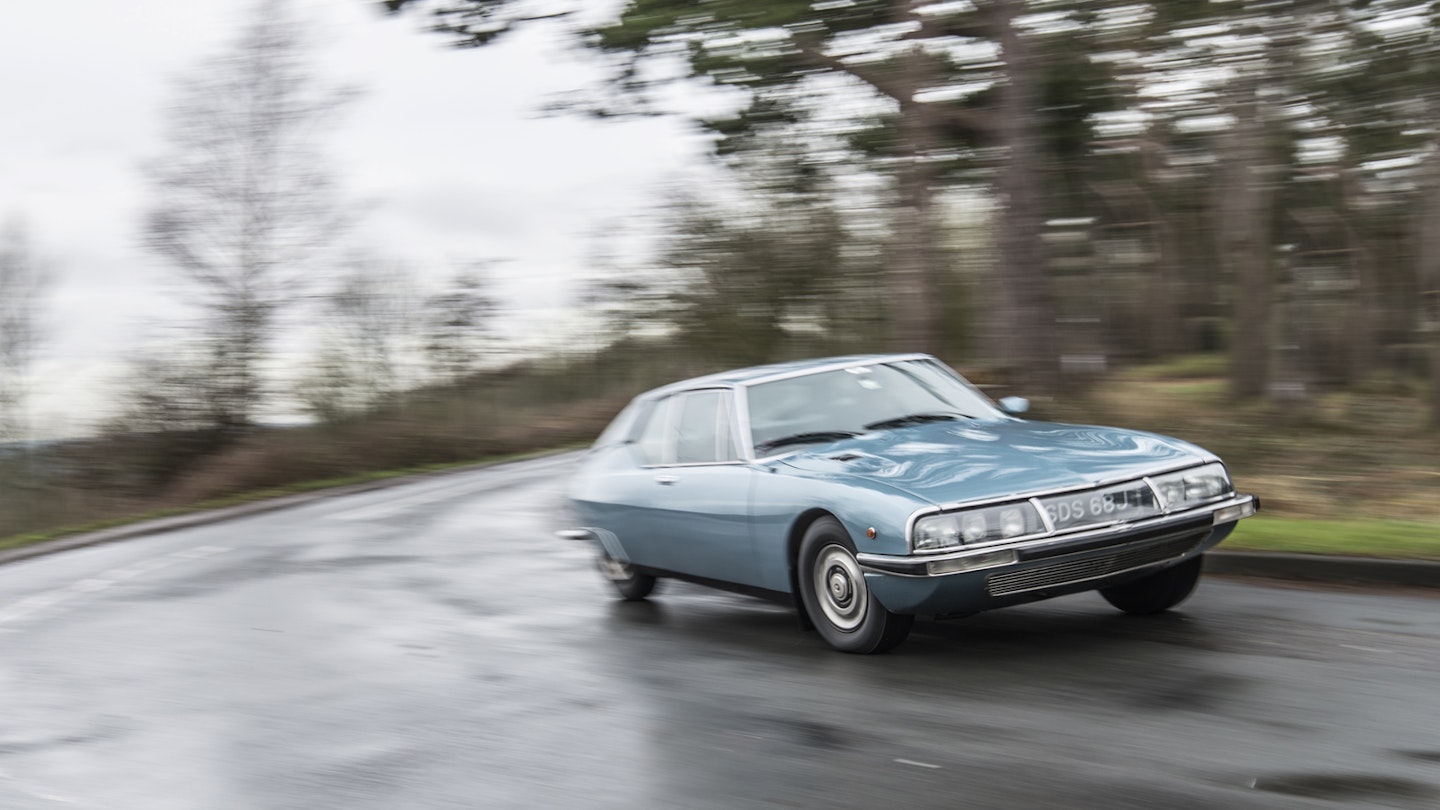
He’s very respectful of the fact we’re in someone else’s car but doesn’t hang about through corners. ‘The suspension is harder than I was expecting,’ he says, and I agree. It’s much firmer than a DS, and more suited to what is a sporting Grand Tourer. ‘The back end feels a bit lively, as if it’s jumping a bit. If I push it any more it might start hopping.’ This he puts down to the huge 85-profile tyres, which he refers to as ‘big balloons’. ‘It’s accentuated because I drove over in my track-day car, if I’d come over in my Audi it’d be less so.’
After some dual-carriageway work we stop off for a driver swap. Martin asks to open the bonnet; its less agricultural than a DS’s engine bay but still unique with its combination of hydropneumatic fluid tins, pipes and suspension spheres, and the largest air box known to man. But our eyes are drawn to the compact engine wearing the Maserati trident. ‘It’s set so far back and low down, which gives the car a low centre of gravity,’ says Martin.
Back on the road I’m going through the same familiarisation process recently experienced by my passenger. Anyone observing from outside would see the car rolling prodigiously through hard cornering but inside the cabin it doesn’t feel like that; the self-levelling suspension seems to keep the cabin level at all times. Ruts and imperfections on the road surface have little effect on the car’s balance but, unlike the driving-on-a-cloud DS, you’re never fully disconnected from what’s happening below.
Natural habitat
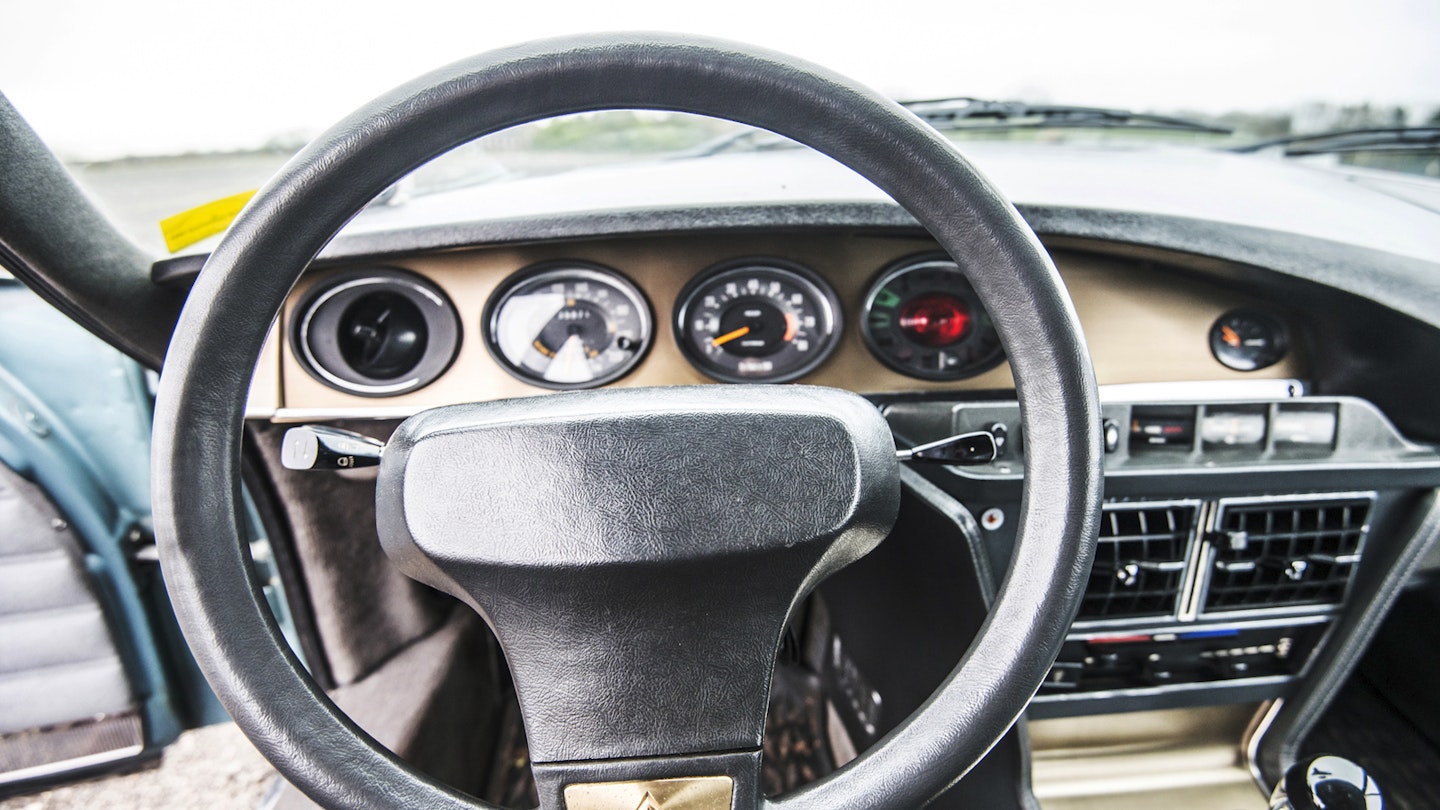
The DIRAVI steering system, which varies its assistance depending on speed – greatest when static, firming up at speed – responds best to a sweet touch, rather than a heavy hand. The gearbox is perfectly weighted. Martin got it spot-on in describing its action as being like a rifle bolt; the whole barrel that the gearlever sits in rotates and you get a delicious metallic clack as it slots home.
We’re missing a trick here, though. ‘M25,’ I say. Martin nods his head in agreement. As content as it is in town, on B-roads and even up to 50mph on a suburban dual carriageway, these are not the SM’s natural home. Chris Rea’s Road to Hell may not be everyone’s idea of the perfect destination but today, in this car, it is. As we join, I hit the throttle and the V6’s power comes on with a turbine-like refinement – let the revs build towards the 6500rpm redline and it’s accompanied by a deep Italian growl. North of 50mph it’s a revelation and very little comes close in terms of high-speed serenity – even today, 45 years after its release.
SM dreams intact
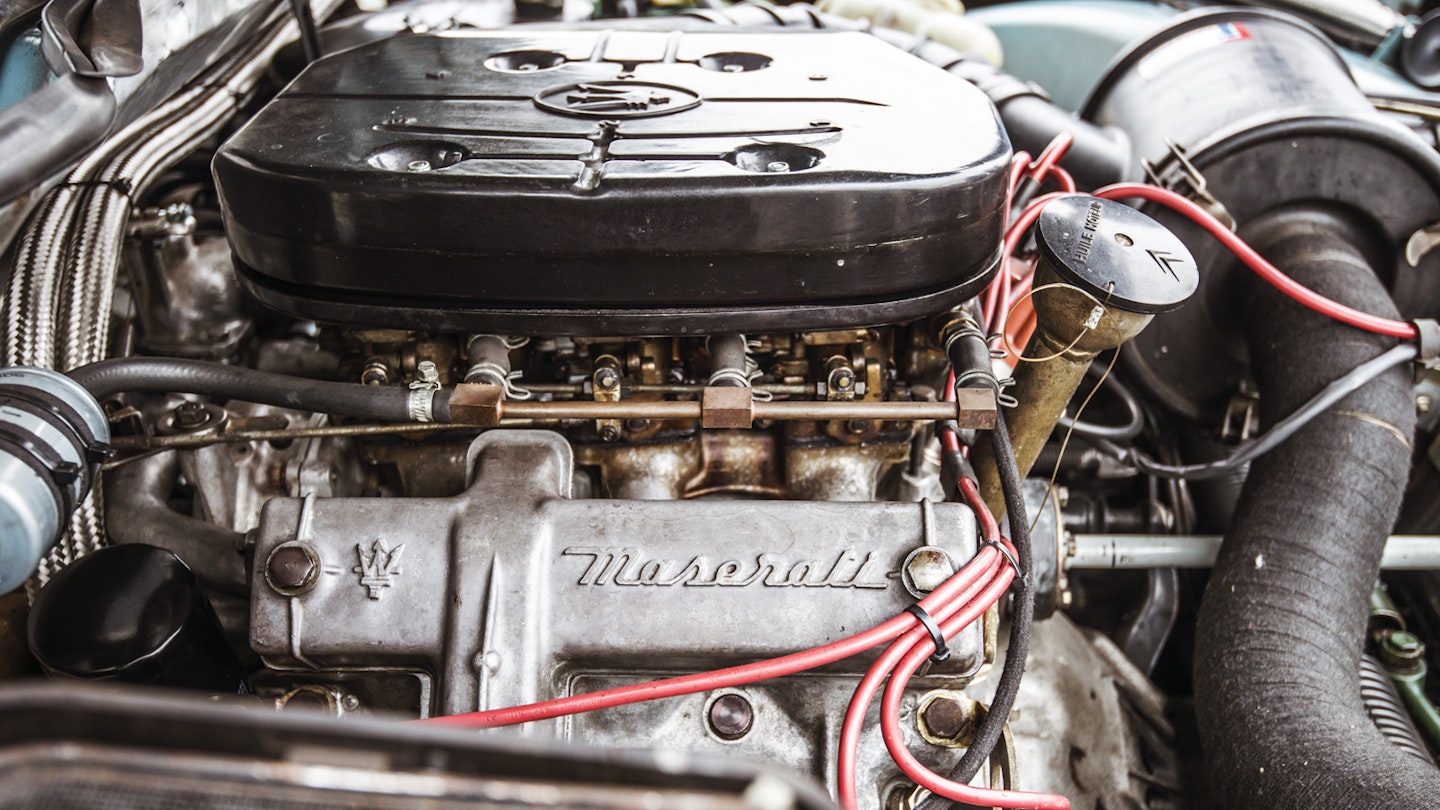
Back at Ian’s we return the keys, both satisfied with our SM experience. In his book The Doors of Perception the writer and philosopher Aldous Huxley famously reflects on the heightening of perceptions caused by the drug mescaline. An SM does the opposite: the in-built sharpness of its helm controls makes other classic cars seem turgid by comparison, and the driver’s senses have to amplify to meet the challenge of driving one. Citroën achieved this not by chemical manipulation but by innovative and precision engineering.
‘So, what did you think?’ asks Ian. ‘All dreams remain intact,’ replies Martin. ‘Sometimes you lust after a car, you build up an image of it over decades, but when you get behind the wheel it disappoints. Not here. It drives magnificently, is superbly comfortable and what’s cooler than climbing out of one? I’ve just remembered something,’ he adds, pointing to the dashboard warning light system that resembles a roulette wheel.
Ripe for further development...
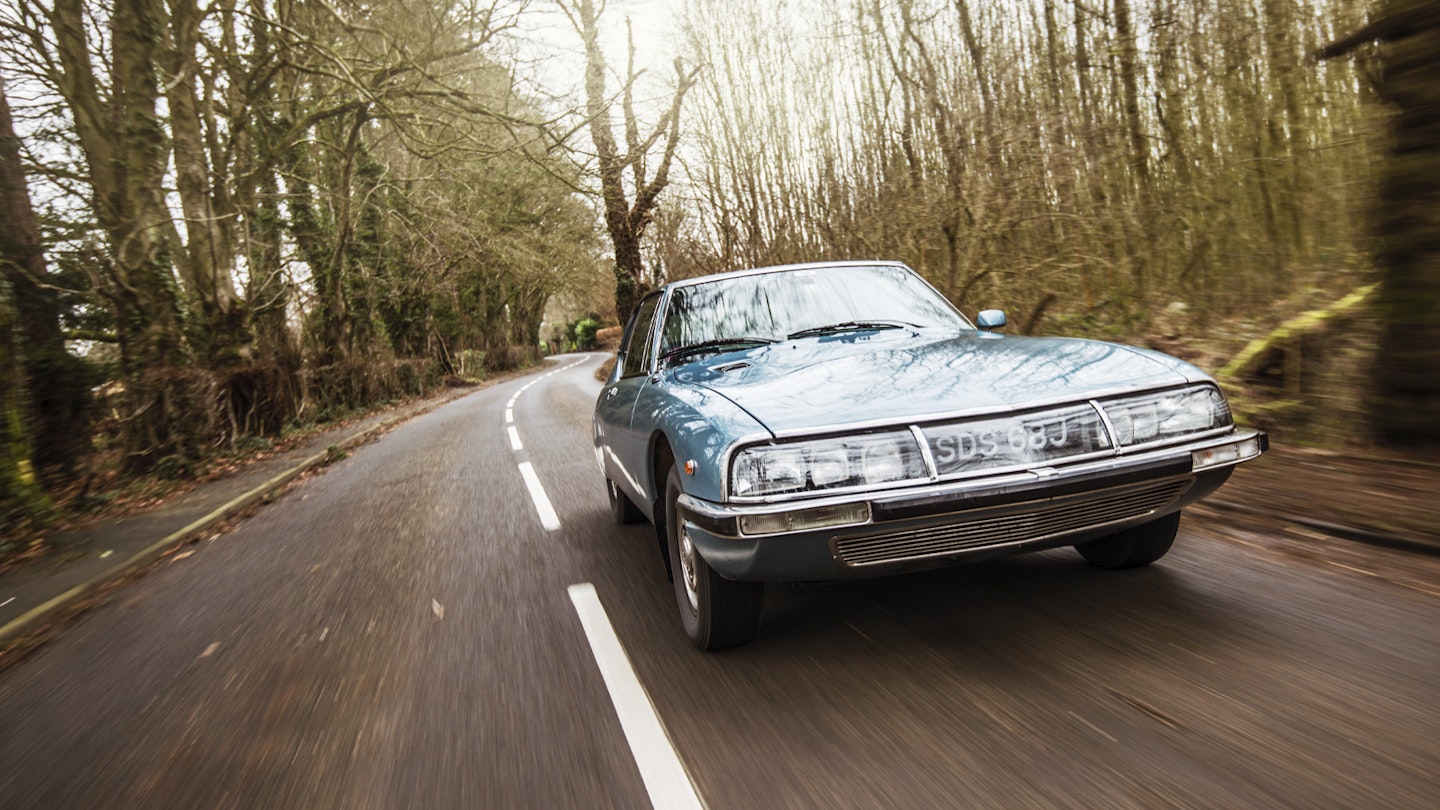
‘Back in ’74 I’d never seen so many warning lights on a car, and it’s possibly one of the reasons I’ve stayed clear of its charms.’ Ian nods his head in agreement. ‘Me too, but then I finally took the plunge.’ His Hungarian-sourced SM is a compliment to the work of the boys at SM specialist BL Autos in Welwyn Garden City. ‘So,’ I ask Martin. ‘Would you have one?’ ‘Definitely,’ he says. ‘Would you be able top stop yourself from modifying it?’ He thinks for a second. ‘Now there’s a question…’
Thanks to: SM owner and playwright Ian Dixon-Potter, Barry Lowdell and BL Autos (blautos.co.uk)
This article was original published in the April 2015 issue of Classic Cars magazine as part of our ongoing feature series, The List. Check our the latest issues of Classic Cars magazine, or consider taking out one of our new range of print or digital memberships.
